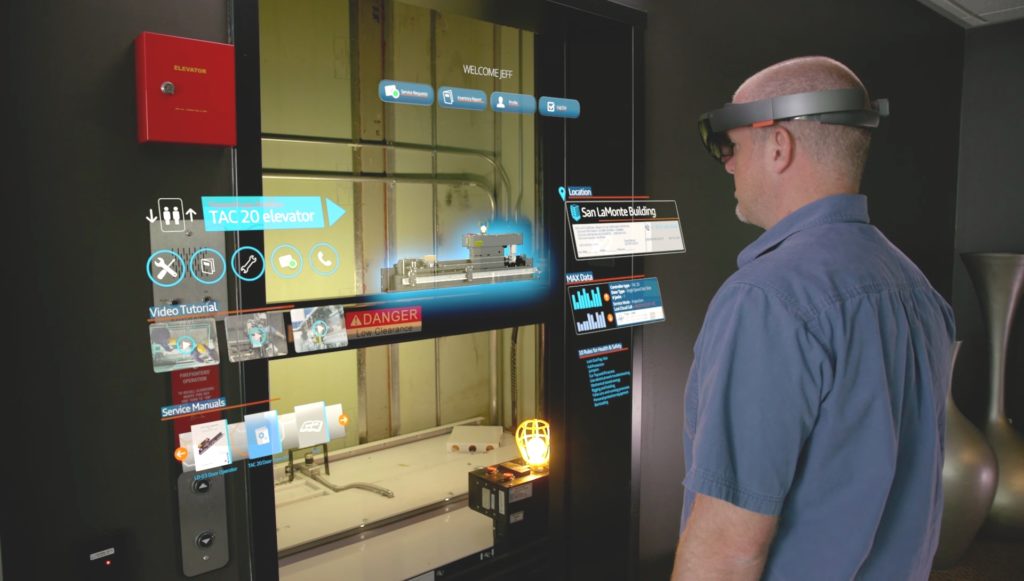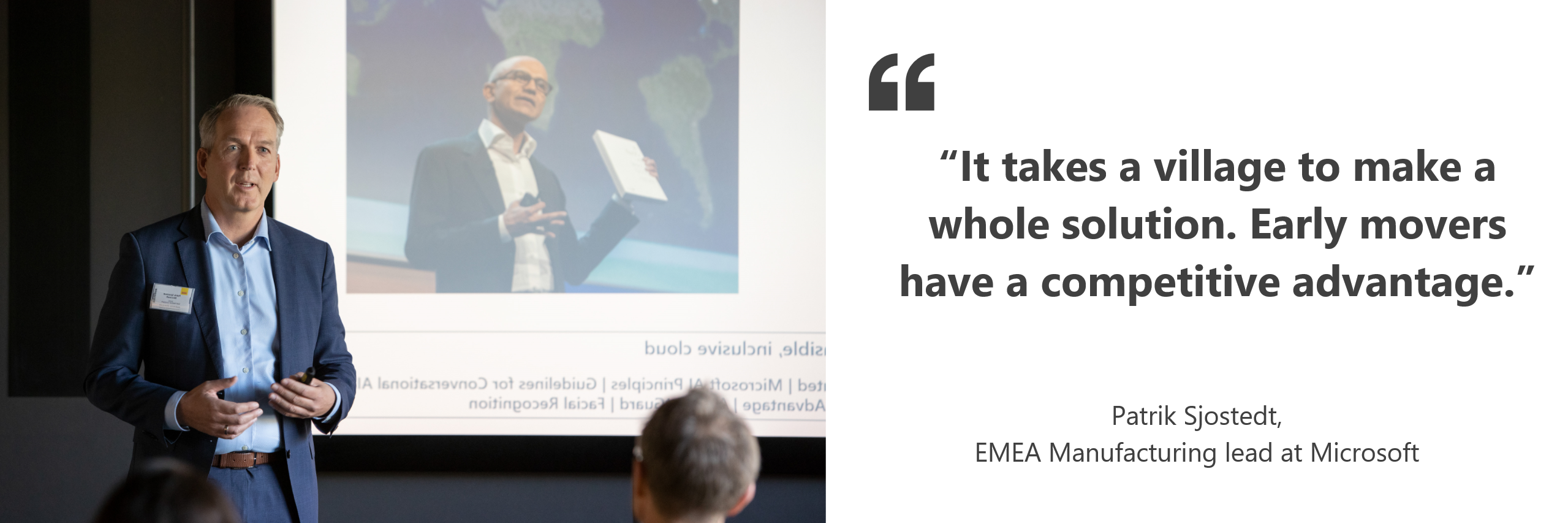From the bed you sleep in, to the car you drive, we’re surrounded by objects that have travelled through a precise, calculated chain of events before reaching their final destination.
Technological advances have always had an impact on one of Europe’s strongest industries that accounts for a large portion of the continent’s exports as well as millions of jobs and billions in investment.
Today, more than ever, manufacturers need to evolve if they wish to stay competitive. Digital technology is profoundly impacting the way factories operate more autonomously today. Production and inspection processes are being re-invented to foresee maintenance needs and minimizing waste, helping people and the environment that surrounds them.
Also, like many industries, manufacturers are contending with an aging population that’s retiring and taking their skills and knowledge with them, as well as the challenge of attracting new talent.
We discuss these and other development below, after having worked closely with manufacturers all around the world, who have shared their learnings with us.

Shifting the pillars
Cost, quality, and productivity are three core pillars of manufacturing. While their importance has remained constant, the tools that impact them are forever changing.
History has shown that the shift from manual labour to machines has reduced costs while improving quality, productivity and efficiency. Today, we are seeing these key attributes go through another radical transformation.
Mixed reality solutions such as HoloLens are being used by companies to train their staff on the use and repair of machinery and equipment. Not only is this faster than setting up physical learning scenarios, but it also improves safety while reducing costs.
Beyond training, we’ve seen examples from companies such as Thyssen Krupp Elevators, which equips its field technicians with HoloLens headsets, enabling them to instantly overlay instructions and virtual assistants alongside physical elevator equipment, improving the speed, quality and efficiency of repairs.
Siemens Gamesa has another example which showcases the transformative power of technology. Its gigantic wind turbine blades can reach up to 85 metres in length, and are wide enough for a truck to drive through their centres. The blades themselves can cost up to €700,000, and their creation is an intensive process, requiring eight hours’ worth of resin to be pumped, followed by 12 hours of cooling time and a further 18 hours of manual material-layering. It’s easy to see how mistakes in such a process can be incredibly costly.
The introduction of new technology into the process has had a dramatic impact on efficiency and cost. Now, numerous IoT sensors capture temperature, pressure humidity and other data which is, in real-time uploaded and analysed in the cloud. AI and machine learning tools use this data to optimise manufacturing parameters. This has increased both consistency and quality, which in turn has resulted in lower repair costs and increased productivity.
“It’s like baking incredibly expensive cupcakes,” says Christian Sonderstrup, Chief Digital Officer, Siemens Gamesa. “You put them in an oven at a set temperature for a certain time and check them when they’re done. If things fluctuate and you have a bad batch, you’ve lost time and money. This is a wonderful example of data science and AI being used in a manufacturing process that is otherwise completely manual.”
The benefits of technology go beyond the manufacturing process however. Once installed, turbine blades can be in use for 20-30 years, during which there is always a risk of damage. Siemens Gamesa is using drones to fly pre-set paths around turbine blades, taking up to 100 high-resolution shots of each blade from both sides. The drones then upload these images to the cloud, where image recognition powered by AI and machine learning stitch them together, before automatically flagging any damage or causes for concern, such as cracks or other faults.
In the past, the image stitching alone would have taken four hours, taking up most of a worker’s day. Now, the stitching process takes just 34 seconds. Not only is the drone method safer, but the time it saves frees up workers for other tasks, saving significant amounts of time and money. The new method also allows maintenance to be carried out before issues arise, further lengthening the life span of each turbine blade.
Hardware as a service
Another key shift taking place in the manufacturing industry is the transformation of hardware as a service. In the past a customer would, for example, purchase machinery from a manufacturer, and the relationship would end there. With the advent of modern connected devices however, the conversation continues long after this initial sale.
Petra Sundström, Head of Digital Business Development, Sandvik states that “We have seen shifts before, but now we see digital as glue. We used to create and ship things to customers, but now we send them intelligent products and build a data-based service around this hardware.”
IoT sensors in machinery can constantly monitor parameters and communicate back to the manufacturer. In this way, faults can be detected or even predicted before they happen, allowing manufacturers to repair items in a timely manner, reducing downtime and overall costs.
Software updates can also provide new functionality to machinery without the need to purchase newer, more expensive hardware. This saves money for both the customer and manufacturer, while still providing the latter with a source of additional income.
“Before, you’d ship a product, and that was that,” says Patrik Sjostedt, EMEA Manufacturing lead at Microsoft. “Now, machines are constantly communicating back to the head office, giving an overview of their operations. This is a huge opportunity for customer intimacy.”
“When you start connecting to machines they become a service,” he continues. “They can be updated and improved. We’ve shifted from a model of selling new hardware to improving features and functionality with software updates. This benefits both manufacturers and customers, and also results in continuous product development.”
Endless learning
Using prototypes to test and develop new products or improve existing ones is a crucial activity for all manufacturers. The creation of prototypes can be a costly process however, especially when stress-testing can result in thousands of different iterations.
Digital twins are virtual representations of physical objects or systems that manufacturers can use to test both new and existing designs. Data from the real world can be pushed into these digital models to see what affect design changes would have in the real world. This process is much cheaper, faster, and safer than experimenting with physical objects.
In the words of Åsa Svedenheim, Digital Enterprise at Siemens: “There’s no better place for crashes to happen than in a digital twin.”
With so many manufacturers operating in a competitive landscape, the thought of working together to learn new things may not be immediately obvious. On the contrary however, many companies in the industry are seeing the benefits of shared knowledge.
BMW Group, for example, is sharing its open IoT data platform solution with other companies, allowing more people to benefit from its technology and learnings, while opening up new business models.
Andreas Hees, Manager DevOps Inhouse Logistics BMW Group believes that “The main benefit of an open community is that when you put something in, you get something in return. To do this successfully, you need to change and embrace openness. We have seen the value of open source communities and the Open Manufacturing Platform allows us to work with Microsoft and other partners to establish a community that works together to solve common industrial challenges.”

All these technology-driven changes need the right company culture and leadership to work properly. We’ve seen that technology alone isn’t enough to drive improvements – leaders must engage with their employees to encourage learning and adoption.
The companies that manage to foster the right culture around these new technologies will be the ones with a competitive advantage, improving their existing business models, creating new opportunities, while attracting and retaining new talent. This is truly a future that’s well worth manufacturing.




 A unique international forum for public research organisations and companies to connect their external engagement with strategic interests around their R&D system.
A unique international forum for public research organisations and companies to connect their external engagement with strategic interests around their R&D system.